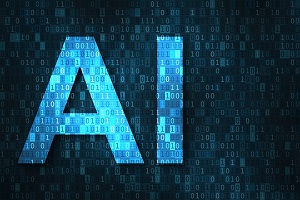Implementing artificial intelligence (AI) can bring improved performance, streamlined processes, and better decision-making to an organization. But technology is only one component to AI success. Organizations should also integrate AI solutions into their operations and have employees adopt them in their everyday work—and this can be easier said than done.
AI tools can be a marked shift from the status quo. Moreover, AI solutions can be disruptive to business as usual, altering familiar processes and activities. These factors can lead to resistance—a natural human reaction that puts AI initiatives and investments at risk of sitting on the shelf and failing to realize their full potential.
When your organization faces large-scale change, the only way forward is to manage it, and this is particularly true in an evolving and complex area like AI. How can you get such a change management plan started? What are the essential components, and what actions can you get started on right now? Here are five key tips.
1. Start with a vision – and quick wins
AI success starts with vision: what you want to achieve and how well an AI initiative connects to your organization’s strategic goals while delivering value. With such a vision established, you’ll be able to evaluate your current capabilities, identify your desired outcomes within the context of broader organizational strategy, and build a roadmap for your AI journey. What’s more, your staff will be able to visualize the short- and long-term milestones involved in getting there.
After looking at the big picture, it’s time to think small. Launch your AI initiative with a pilot program that generates quick wins. You’ll engage early adopters, turn them into champions for change, and provide lessons learned for an incremental project rollout.
2. Take a human-centered approach
With a new area of innovation like AI, it’s tempting to get overly distracted by flashy technology. Resist this temptation and focus instead on the problem to be solved and the people that will benefit from solving it.
Give AI users a sense of ownership along every stage of the design and development lifecycle. Involve both technical end users (like data scientists) and non-technical decision-makers (those using the solution’s output) in conceptualizing the system, gathering requirements, developing the solution, testing it, and measuring success. Such human-centered AI implementation increases the likelihood of an AI solution that meets users’ needs and therefore gets used.
3. Empower staff with knowledge
New AI solutions often spur questions among the employees who’ll be using them. Will AI actually make their jobs easier? Or will work be more difficult, with a steep technical learning curve? How will they know they can trust the algorithm’s output? Is this AI tool just the first step to replacing their jobs?
Knowledge is power, especially when it’s proactively shared and specifically focused on addressing fears and concerns. Set a foundation of understanding and trust with education on how AI works, tailored to different levels of knowledge. Leading up to the implementation, deliver clear guidance on how workflows will change and clarify changing roles and responsibilities. Then reinforce this foundation and these changing roles with long-term upskilling opportunities for practitioners, business users, and leadership.
4. Be realistic and responsive
As you educate and encourage adoption, be sure to manage expectations. If people anticipate a science fiction-level experience and AI tools fall short, employees will be less likely to use this and other AI solutions and leaders will be less willing to invest in AI in the future.
Communicate strategically about what AI can—and cannot—do and the timeframe involved. Leverage those quick wins to keep users motivated for the parts of the process that take more time (e.g. moving successful small-scale pilots into production systems for enterprise use).
Throughout this process, solicit feedback so employees feel heard and valued. What about the implementation worked well? What could go more smoothly? What other ways could employees use AI throughout the organization? Prioritize all insights and feed the best ones back into the organization to inform future efforts.
5. Build an AI community
As you prepare for, implement, and sustain AI-related changes, human connections will be the glue that hold it all together. It’s vital to build community throughout the process, from initial introduction through deployment and beyond.
Such a community accelerates understanding of new AI capabilities by encouraging staff-to-staff dialogue and amplifying top-down communication. It also strengthens AI adoption by integrating a shared sense of responsibility into all aspects of your organization.
Start by identifying employees who are interested in AI projects, then empower them to spark community engagement through tools like a shared online platform with educational resources and project opportunities, hackathons for identifying new AI solutions, and AI-themed networking events.
Any successful AI integration results from truly embedding it in the ways your organization operates. With a robust AI change management plan, focused on the people on the ground who’ll be implementing and interacting with AI solutions, you can operationalize AI across your organization—and fully realize its promise for efficiencies and innovation.
About the Authors

Katie Wrenn is a Lead Associate in Booz Allen’s analytics practice and AI services business who is passionate about helping organizations plan for and navigate the people side of adopting AI-enabled solutions.

Ernest Sohn is a Principal/Director in Booz Allen’s analytics practice and AI services business focused on the integration of AI-enabled solutions for federal civilian clients.
Sign up for the free insideBIGDATA newsletter.
Join us on Twitter: @InsideBigData1 – https://twitter.com/InsideBigData1





Speak Your Mind